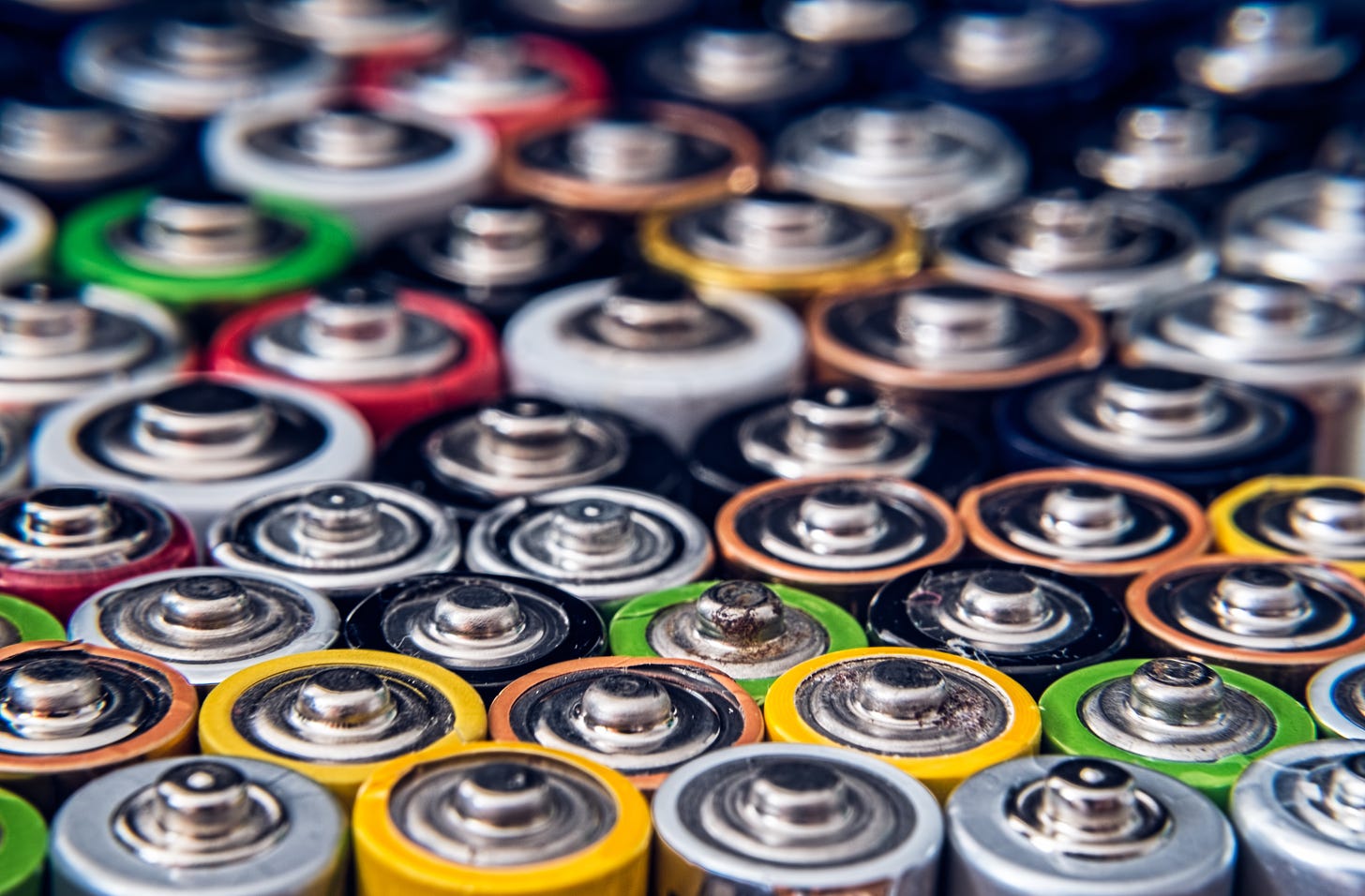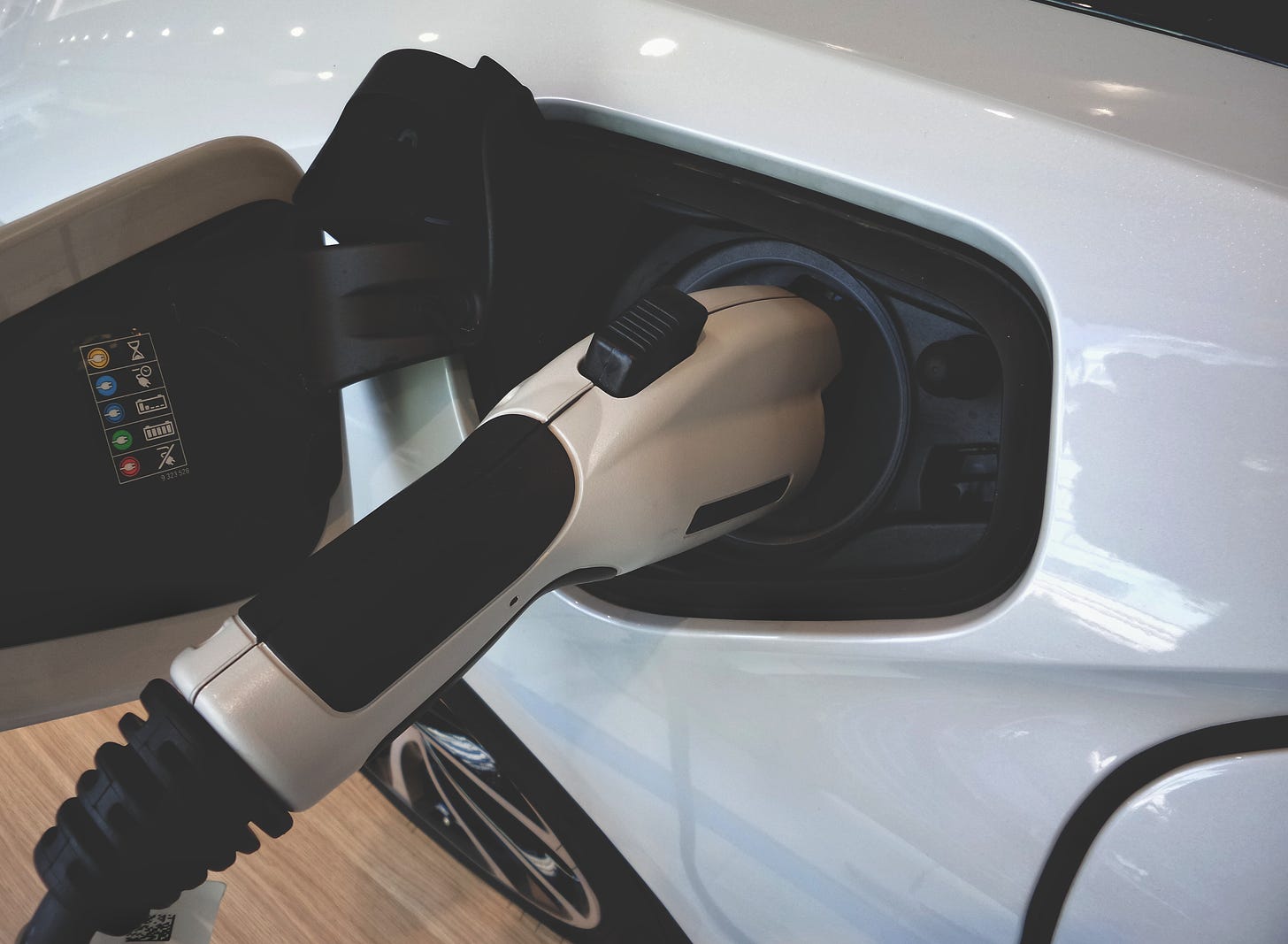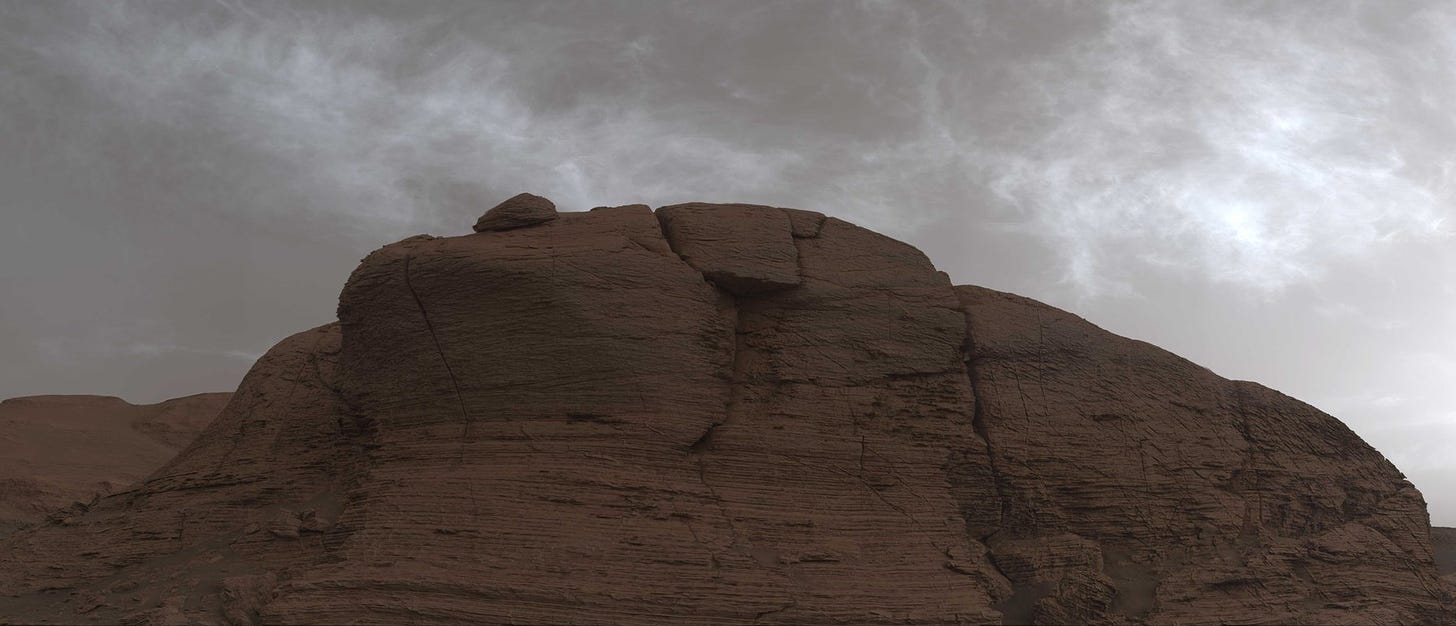Green discovery
Something green enough to generate hope rather than carbon
Significant milestones for batteries in 2023?
Photo by Roberto Sorin on Unsplash
Battery technology is a hotbed of discovery around the world at the moment, as vested interests look for a breakthrough discovery and the riches which hopefully follow.
We don’t need to look any further than the dynamic growth in electric vehicles (EVs), globally, to understand why.
Over 10% of global car sales were electric in 2022, well over 16.5 million vehicles and numbers are on track to reach 30% by the end of the decade.
The reason is sustained government support, although no longer in the UK, with public spending continuing to grow in subsidies and incentives.
The US Inflation reduction Act is a brilliant example, setting aside $370 billion for climate and clean energy including billions for EV and battery manufacture.
It’s not surprising that car manufacturers have responded, rapidly electrifying their ranges, playing catch-up with Tesla, when legislation is already in place to phase out fossil fuel engines in some high volume countries. Already the number of EV models available in the market exceeds 450.
The barriers of affordability and access to charge points, which British media gleefully highlighted last Christmas, is discussion for another time.
Photo by Possessed Photography on Unsplash
Lithium-ion, an old technology, is still the most common, used in laptops, mobiles and EVs. Demand has gradually helped to push prices lower and the current technology can already power EVs for hundreds of miles without a charge.
The challenge has been to find new ways to further boost capacity, speed-up charging times and cut costs further.
One way may be solid-state batteries. Unlike Lithium-ion, which needs a liquid electrolyte to move the charge around, solid-state replaces the liquid with a ceramic or other solid material. It means more energy can be packed into a smaller space, they charge faster and it cuts down the possible risk of fire.
One indication of interest and sense of reality is the number of patents being filed by battery and car manufacturers. At the moment, it appears to be Toyota, Hyundai and Honda leading the charge.
Quantumscape, a US battery manufacturer, which has created a solid-state battery using lithium metal, already has an agreement in place with VW. Batteries are expected to be in their cars from 2025.
Another interesting development is to change the chemistry of the current lithium-ion battery, replacing lithium with sodium. Chinese battery giant CATL has plans to begin mass production in 2023. Performance may not be any better, but they can be manufactured more cheaply and no longer rely on the use of lithium.
Chemistry change has become a significant part of the ongoing research because of the price volatility of battery materials.
An expensive part of any battery is the cathode - the metal electrode through which current flows. Nickel manganese cobalt has been the main variety in EV batteries, but is already being replaced with lithium iron phosphate (LFP) in some Tesla vehicles, helping to reduce costs. LFP market share has grown from 10% of global EVs in 2018 to 40% last year.
Ultimately, the demand for raw materials will be unsustainable, which explains why battery recycling is now gaining momentum and investment.
To date, it is Chinese companies including CATL, which have led in battery recycling, but US and Europe are likely to be next.
Redwood Materials in Nevada has started to produce its first product, copper foil from its recycling plant. Li-Cycle in Toronto is working to separate and purify key metals like lithium and nickel for reuse in battery manufacture.
Be happy
An uplifting story to round off your week
Would you like to work with NASA?
Courtesy of NASA
The more I read about NASA, the more impressed I’ve become.
I recently wrote about the scientific research that NASA is funding into battery design and the collaboration with Boeing, on a separate project, exploring the future of passenger aircraft design.
I recently discovered that NASA also encourages citizen science, collaborations between members of the public and professional scientists. To date, more than 400 citizen scientists have been co-authors of scientific publications, helping to make thousands of discoveries.
A science degree is not required. If you’re passionate about understanding the natural world, here’s an opportunity to conduct leading-edge science and the discoveries that come with it.
You might expect that a NASA, citizen science project is all about black holes, red dwarfs and discovering new planets. These exciting projects exist, but so do many others much closer to home.
Landslide Reporter is focusing on creating a suite of tools to map where landslides have occurred around the world. Citizen scientists are encouraged to share their local information using the landslide reporter app which is then stored in a central database called COOLR, the Cooperative Open Online Landslide Repository.
The aggregation of global data helps with the development of models to help communities better prepare in advance for any future disasters.
Courtesy of NASA and the Floating Forests project
Floating forests is focused on tracking the worldwide distribution of kelp.
The Landsat satellites photograph the entire surface of the earth every 16 days and has done since 1984.
There’s only one problem. Landsat was not designed to see kelp. The colour of the light that kelp reflects is at the edge of the camera’s detection abilities, which is where citizen scientists come in. To the human eye, the shapes and patterns of kelp are a lot more obvious and can be identified far more accurately than a computer.
The reason for tracking kelp is because it’s a bellwether for the health of the oceans. In the 25% of the earth’s coastline where it occurs, it forms the foundation of the whole ecosystem. It can grow up to a foot a day and forms lush canopies, which can be identified by citizen scientists from space.
It provides food for the herbivores, habitat, and hiding places for fish and other organisms. It also reduces the impact of coastal waves and it’s an important source of many ingredients like alginate, found in many household products as diverse as shampoo and ice cream.
Courtesy of NASA and Cloudspotting on Mars
Cloud spotting on Mars seems like an interesting project if you fancy yourself as a scientific explorer off planet?
The picture above, which you might think is a rare moody sky in southern Arizona, where cowboy films get made, is actually a picture taken by NASA’s Curiosity rover on the surface of Mars. The sky is a formation of icy clouds, about 30 miles high up in the mesosphere.
What makes them interesting is the fact that water vapour is present in the atmosphere, even though Mars is a dry planet. Mars also has an atmosphere that is 95% carbon dioxide, and it’s a very cold, dry ice-type coldness.
The questions being asked in this project include, what are the clouds made of, what causes the atmosphere to get so cold, and how do the clouds change between day, night and the different seasons?







